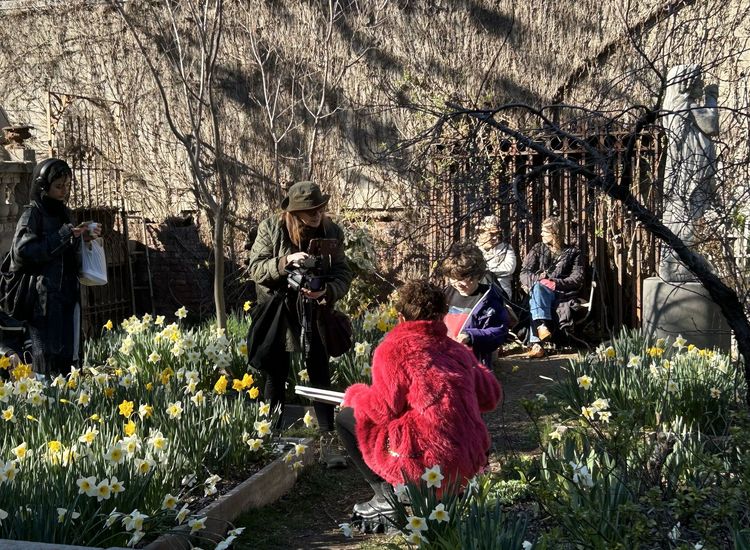By Daniel Neely
For all the attention given the records of the 78 rpm era, few seem to really notice the number of banjos one hears. While aficionados may recognize names like Mike Flanagan of the Flanagan Brothers, Neil Nolan of the Dan Sullivan Shamrock Band and perhaps even Michael Gaffney (who recorded with flute player John McKenna) as being the banjo leaders of the era, people like Boston’s Joe Fahey (who made a single side with his brother John on fiddle), Jimmy McDade (who played with Ed Reavy in the Four Provinces Orchestra), James Ryan (who played with Paddy Killoran) and, later, George Derrane, were also active, their names lamentably lost in most discussions of the instrument’s history.
The players in this early era were spirited and full of character, but their approach seems to have been largely intuitive; if ideas about a teaching method for “Irish” banjo did exist, they haven’t been passed down in any cohesive manner. Sure, the banjo had a place in teaching – fiddle giant James Morrison used the banjo as a pedagogical tool in teaching his young violin students proper intonation (and probably wasn’t alone in doing that) – it wasn’t until Barney McKenna came along and revolutionized the instrument with the Dubliners in Ireland in the 1960s that the likes of Mick O’Connor, Mick Moloney, Kieran Hanrahan, John Carty, Gerry O’Connor, Cathal Hayden and many others began to think differently about how the instrument fit into the music.
Because of these players, the “Irish” tenor banjo has developed substantially and now, a new breed of virtuoso player has emerged that has taken the instrument to new places. One of the players leading the way is Galway’s Enda Scahill. A member of the Brock McGuire band, Scahill has won four All-Ireland titles, guested with the Chieftains, recorded with Ricky Skaggs, and toured with Frankie Gavin and Stockton's Wing. He has also recorded outstanding albums as a solo artist (“Pick It Up,” 2000), as a duo with Paul Brock (“Humdinger,” 2007) and in ensemble with the Brock McGuire Band (Green Grass Blue Grass, 2011).
If being an absolutely brilliant player wasn’t enough, Scahill is also a highly respected teacher. Not only have several of his students won All-Ireland titles for themselves, but since 2008 Scahill has published two separate (and well-received) banjo tutorials that introduce and codify a sophisticated approach to the instrument’s technique that players of all levels have found enlightening.
It’s fitting, then, that Scahill’s most recent offering, the tunebook “40 Solos for the Irish Tenor Banjo,” is not only pedagogical in nature, but includes two of his students, both All-Ireland winners, the brothers Martin and David Howley. (Ironically, credit for the Howley’s banjo skills go to another of Scahill’s students, Johnny Harty; Scahill reports he taught Martin the tenor guitar and David the mandolin, and considers them his “banjo grandchildren.”) Together, the trio is the group WeBanjo3. Formed in 2009, the group took much stronger shape this past September when the Music Network, an arm of the Arts Council of Ireland, gave them the “Young Musicwide Award,” which provides support and professional development assistance to emerging young artists. In addition to this book, they have a CD due out later this year.
“40 Solos for the Irish Tenor Banjo” is not a diegesis on technique, rather, it’s an outstanding resource for banjo players wishing to better know and understand ornamentation and variation. It is presented as two publications in one, and comes with two compact discs. The first part, “20 Tunes Guaranteed to Help You Win Banjo Competitions,” encompasses the first half of the book and provides a nice selection of well-known tunes that stay well within traditional music’s boundaries – perfect for fleadh competition.
Flip the book over as if you’re going to open the back cover and you’ll find the second publication, “20 Tunes Guaranteed to Get you Disqualified from Banjo Competitions.” Here, students will find a selection of original and old time- and bluegrass-influenced tunes, the sort that Scahill has been playing with his various groups, but also the kind Scahill has found (from experience) fleadh adjudicators typically do not reward. (One of the tunes in this section is a Niall Vallely composition; Scahill reports that Vallely was delighted to have one of his own included as a “disqualifier!”)
All the notated tunes in “40 Solos for the Irish Tenor Banjo” are note-for-note transcriptions (in both TAB and standard notations) of the performances the Howleys and Scahill recorded on the two CDs. Being able to see and hear the music is especially valuable because it makes it easy to follow the variations and ornamentations, and to better understand what they mean to the tune. The CDs are a brilliant part of the presentation.
With this tutor, WeBanjo3 has given us a resource young banjoists will undoubtedly turn to for years to come. In addition, Scahill continues his yeoman’s work in elevating the banjo in traditional music.








